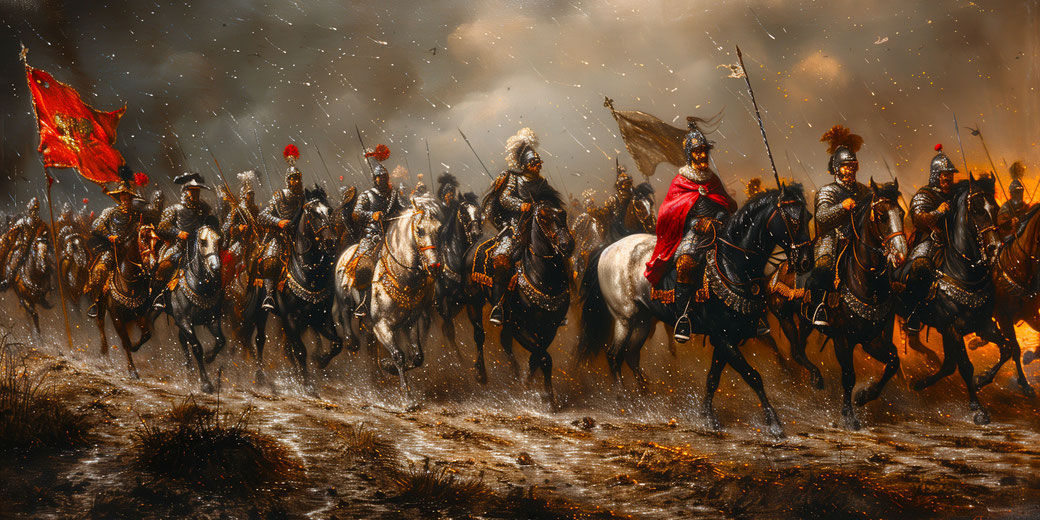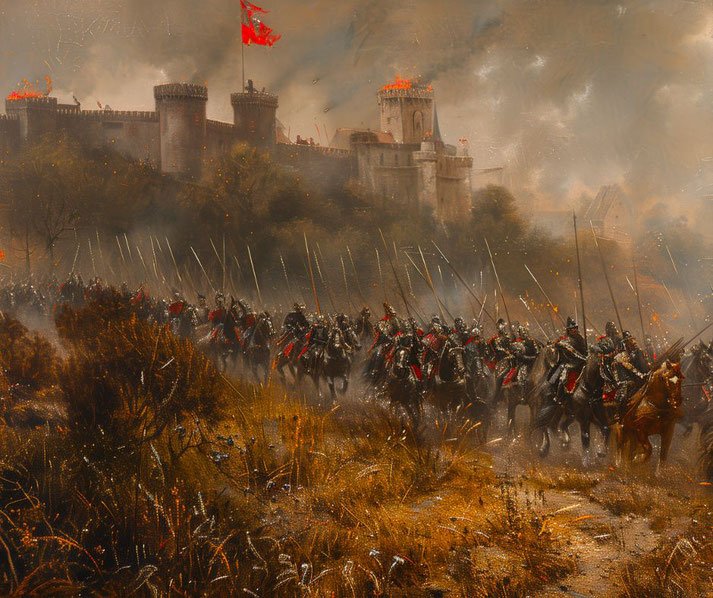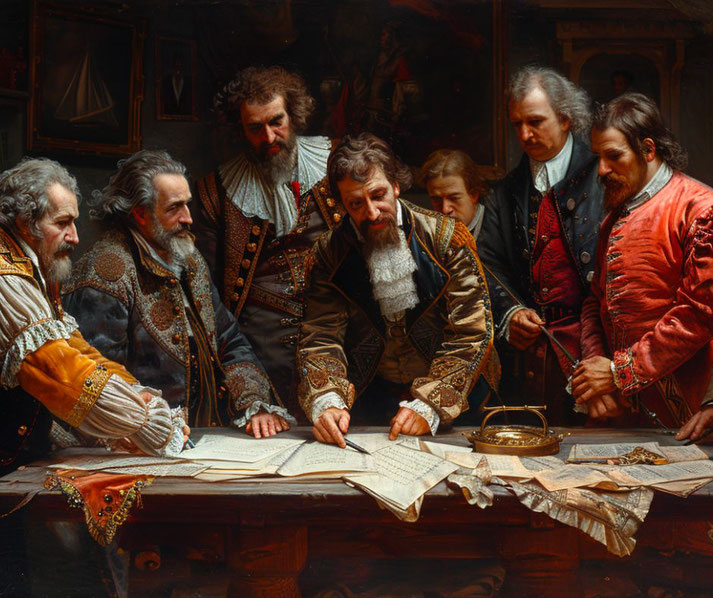Religion, bloodshed, and betrayal: How the Thirty Years' War tore Europe apart

The Thirty Years' War was a cataclysmic conflict that engulfed Europe from 1618 to 1648. It is often remembered as a brutal and transformative period in history, fueled by religious fervor, political ambition, and social upheaval.
It reshaped the continent's political landscape and left an enduring impact on its cultural and societal norms.
What were the causes of the Thirty Years' War?
The Reformation, initiated by Martin Luther in 1517, had fractured the once-unified Christian landscape, pitting Catholics against Protestants and leading to a series of religious conflicts.
By the early 17th century, the Holy Roman Empire, a patchwork of territories in Central Europe, became a hotbed of religious strife, with the Habsburgs, staunch Catholics, seeking to consolidate their power over the predominantly Protestant German states.
The immediate spark for the war came in 1618 with the Defenestration of Prague, an act of rebellion by Protestant nobles against the Catholic Habsburg authorities in Bohemia.
This event escalated into a broader conflict as other European powers, seeking to advance their own interests, were drawn into the fray.
Spain, aligned with the Habsburgs, sought to maintain its dominance in Europe, while France, though Catholic, supported Protestant forces to counter Habsburg influence.
Sweden and Denmark, both Protestant nations, also entered the conflict, seeking to assert their power in the region.
The political landscape of Europe at the time was a complex web of alliances and rivalries, with dynastic ambitions often taking precedence over religious affiliations.
Ultimately, the war was a struggle for territorial control and political supremacy.

Phase 1: Bohemia
The Thirty Years' War unfolded in four major phases, each marked by shifting alliances and changing battlefronts.
The Bohemian Phase (1618-1625) began with the Defenestration of Prague and saw the Catholic Habsburgs clashing with the Protestant Bohemian nobility.
The Habsburgs emerged victorious at the Battle of White Mountain in 1620, reasserting their control over Bohemia by crushing the Bohemian rebels and consolidating their control over the region.
Phase 2: Denmark
The Danish Phase (1625-1629) saw King Christian IV of Denmark, a Lutheran, entering the war to support Protestant interests and curb Habsburg expansion.
However, the Catholic forces, led by the formidable General Albrecht von Wallenstein.
At the Battle of Dessau Bridge in 1626, Albrecht von Wallenstein defeated the Protestant forces led by Ernst von Mansfeld and defeated the Danes.
This led to the Peace of Lübeck in 1629, which forced Denmark to withdraw from the conflict.
Phase 3: Sweden
The Swedish Phase (1630-1635) introduced a new Protestant champion, King Gustavus Adolphus of Sweden, whose military innovations and decisive victories.
At the Battle of Breitenfeld in 1631, King Gustavus Adolphus employing innovative tactics to defeat the Catholic League's army.
However, Gustavus Adolphus's death in 1632 at the Battle of Lützen was a major blow to the Protestant forces,though they managed to claim victory in the battle.
The conflict continued to rage, with the Battle of Nördlingen in 1634 seeing a major Catholic victory, which led to the signing of the Peace of Prague in 1635.
Unfortunately, this treaty failed to bring an end to the hostilities.
Phase 4: France
The final phase, the French Phase (1635-1648), saw France, under Cardinal Richelieu, entering the war directly against the Habsburgs, despite being a Catholic country.
France's involvement was driven by political rather than religious motives, aiming to weaken Habsburg dominance in Europe.
This phase was typified by widespread devastation, as armies crisscrossed the continent, and the conflict became a truly European war.
The French Phase of the war saw the Battle of Rocroi in 1643, where the French forces under the Duke of Enghien decisively defeated the Spanish army, signaling the decline of Spanish military dominance in Europe.
The bloody impact of the war on Europe
The war's relentless destruction and the movement of armies across the continent led to widespread famine, disease, and death.
Estimates suggest that the Holy Roman Empire lost between 25% and 40% of its population, with some regions experiencing even greater losses.
The war exacerbated the spread of diseases such as the plague and typhus, further decimating the population.
Agriculture, the backbone of the economy, was severely disrupted as fields were trampled, crops were burned, and livestock were slaughtered or stolen by passing armies.
Trade routes were interrupted, leading to a decline in commerce and the impoverishment of many urban centers.
The cost of the war, financed through heavy taxation and borrowing, left many states and principalities on the verge of bankruptcy.
The widespread destruction and loss of life eroded traditional social structures, leading to increased social mobility in some areas but also to greater social unrest.
The conflict deepened religious divisions and hatreds, which persisted long after the war's end.
Additionally, the war contributed to the decline of feudalism and the rise of absolutist states, as rulers centralized power in their efforts to rebuild and assert control over their devastated territories.

How the Thirty Years' War was finally ended
The Peace of Westphalia, a series of treaties signed in 1648, brought an end to the Thirty Years' War and marked a turning point in European history.
The negotiations took place in the cities of Münster and Osnabrück in the Holy Roman Empire, involving representatives from various European states.
The peace treaties, known collectively as the Peace of Westphalia, consisted of three main agreements:
- the Peache of Münster between the Spanish Empire and the Dutch Republic
- the Treaty of Münster between the Holy Roman Empire and France
- and the Treaty of Osnabrück between the Holy Roman Empire and Sweden
One of the most significant outcomes of the Peace of Westphalia was the recognition of the principle of state sovereignty.
The treaties affirmed the right of each state to govern its own affairs without external interference, laying the foundation for the modern system of nation-states.
The Peace of Westphalia also redrew the political map of Europe, with territorial adjustments that shifted the balance of power.
France gained territories in Alsace, Sweden acquired parts of Pomerania and other areas, and the Dutch Republic was formally recognized as independent from Spain.
Religiously, the Peace of Westphalia reinforced the principle of cuius regio, eius religio (whose realm, his religion), allowing rulers to determine the official religion of their territories.
This provision extended legal recognition to Calvinism alongside Lutheranism and Catholicism, contributing to the establishment of religious pluralism in Europe.
The Peace of Westphalia is often cited as the beginning of the modern international order, as it established norms and principles that continue to influence the conduct of international relations, including the concepts of state sovereignty, non-interference, and diplomatic immunity.
Further reading
What do you need help with?
Download ready-to-use digital learning resources
Copyright © History Skills 2014-2024.
Contact via email
With the exception of links to external sites, some historical sources and extracts from specific publications, all content on this website is copyrighted by History Skills. This content may not be copied, republished or redistributed without written permission from the website creator. Please use the Contact page to obtain relevant permission.





